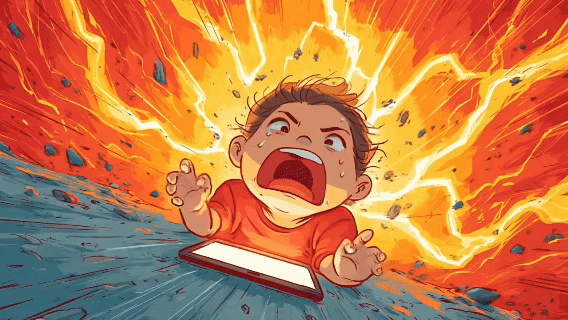Stop Screen Time Battles in Their Tracks
Why kids melt down when screens go off—and how a simple video routine can help


Written by Dr. Carla Engelbrecht — mom, education technology expert, and creator of Hippo Polka. Carla has spent 25 years designing content for Sesame Street, Netflix, and PBS Kids. She holds a doctorate in Instructional Technology from Columbia University and is on a mission to make screen time joyful, educational, and easier for families.
Ending Screen Time: The Pain Point Parents Know All Too Well
Does ending screen time at your house feel like wrestling a T-Rex every single day? You say, "time's up!" and suddenly—tantrums, tears, chaos.
Here's the truth: it's not just your kid being dramatic. It's biology. Their brains are crashing from dopamine—the feel-good chemical screens pump out. When you hit off, dopamine drops, and boom—meltdown.
But there's good news. You can outsmart the crash with one simple routine.
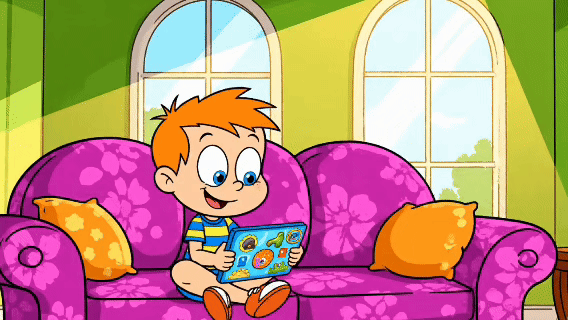
Why Screens Feel So Irresistible
Screens light up the brain with dopamine—a neurotransmitter often called the "feel-good chemical." Dopamine is what makes us crave another cookie, keep scrolling a feed, or play "just one more" level of a game. For kids, it's even more powerful because their brains are still developing self-control.
When your child is watching, dopamine is flowing steadily, keeping them focused and engaged. But when the screen turns off, dopamine drops suddenly. To a child, that crash doesn't just feel disappointing—it sparks a craving for more. Their brain is saying, "Wait, I liked that feeling, bring it back!"
That craving drives the meltdowns and begging for "just five more minutes." It's not disobedience—it's biology. And that's why ending screen time without a plan feels impossible. It's not just about setting limits—it's about giving the brain a softer landing.
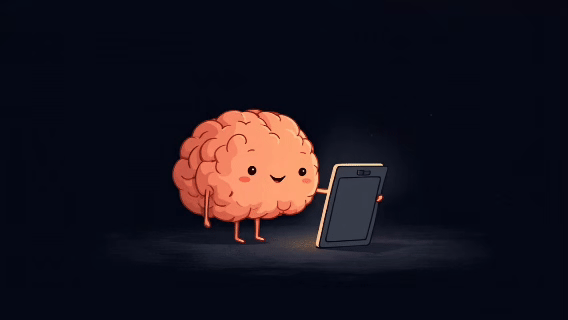
The Science + The Missing Routine
Kids thrive on routines. That's why we sing songs for clean-up, follow bedtime rituals, and have morning routines to get out the door. These patterns aren't just convenient—they give children a sense of safety and predictability. Their brains can relax because they know what's coming next.
But here's where screen time is different: most families don't have a clear closing ritual for screens. The tablet or TV just shuts off, and that sudden stop is jarring. Their brains have been riding a wave of dopamine, and when the ride ends abruptly, it feels like free-fall. No wonder tantrums happen.
The missing piece is a bridge routine. Something consistent, playful, and reliable that helps kids transition from the virtual world back into the real one. This isn't about punishment or willpower—it's about neuroscience. When we pair the end of screen time with something fun, rhythmic, and social, we're literally rewiring the association in their brains:
Instead of "screen off = loss," it becomes "screen off = something new and exciting."
Instead of fighting to hold on, their brains shift forward, expecting the next step.
Instead of tension between parent and child, you get collaboration and connection.
Think of it as swapping one dopamine source for another—but one that strengthens your bond and sets up the rest of the day for success. That's why having an end-of-screen-time routine is just as important as the bedtime routine you already rely on.
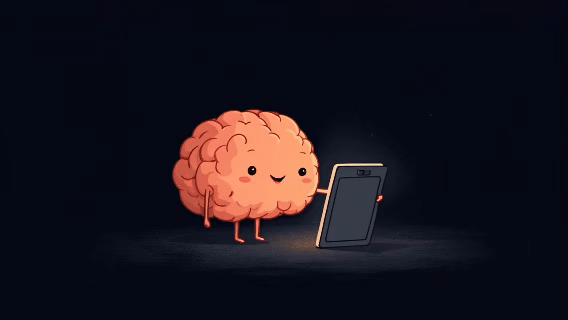
Replace the Rush—with Connection Built In
When screens shut off, kids don’t just need distraction—they need a new source of dopamine. And the most powerful one? Human connection.
So when you’re approaching the end of screen time, join your child. Make eye contact, touch their arm, give them a hug or a snuggle. Show them you’re there.
them a rush just as the video fades out. A few ideas:
- Roar like dinosaurs and stomp around the room.
- Do a 30-second dance party together.
- Pretend you're pirates eating snacks or monster trucks brushing teeth.
- Act out their favorite scene from the show they just watched.
- Have a quick "Simon Says" game or a round of "Red Light, Green Light".
Movement, connection, and silliness together are a powerful combo to smooth out that dopamine drop.
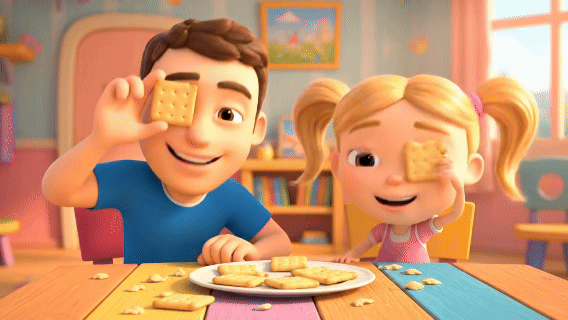
The Power of a Cue (And a Song)
We've all got a clean-up song. Why not an end-of-screen-time song?
When a screen turns off, dopamine doesn't just fade — it drops sharply, leaving kids craving more. That craving is what fuels the "just five more minutes" battle. A cue — like a song — gives their brain something new to hook onto right as the dopamine dip hits.
I actually made one that's posted on HippoPolka. You can use it straight from this page or our YouTube channel, or you can create your own with these instructions.
Now, when that song plays, it's not a fight. It's a signal: the fun is moving somewhere else. Toddlers think it's silly, big kids laugh, and even teens respond. They may roll their eyes and call it cringe, but they still come along for the routine — because their brains get the little boost they were craving.
Whether you use Hippo Polka's version or make your own, you've built a bridge over the dopamine crash. Instead of resisting the end, your child's brain shifts gears smoothly — from screen to connection, from craving to cue.
Wrapping It Up
So next time you face a screen time battle, remember—it's not about willpower. It's about dopamine. When you swap the crash for connection, and use a simple cue like a song, you're working with your child's brain instead of against it.
Screen time is here to stay—but the battles don't have to be.
💡 Want more?
- Subscribe on YouTube to get all our latest Hippo Polka videos for kids.
- Sign up for emails and we'll send you new routines, tips, and videos you can use right away.
- Share your thoughts or questions directly with me at carla@hippopolka.com. I'd love to hear what's working for your family (or what's not!).
Together, we can make screen time joyful, educational, and so much less stressful.
Frequently Asked Questions
Why does my child meltdown when screen time ends?
When screens turn off, the flow of dopamine in the brain drops suddenly. That crash can feel uncomfortable, sparking a craving for more. For kids—especially toddlers and preschoolers—that craving often shows up as tantrums or "just five more minutes."
How can I end screen time without tantrums?
The key is to replace the dopamine crash with something new and engaging. Use a consistent end-of-screen-time routine—like a song, dance, or silly game—that shifts your child's attention and gives their brain a softer landing.
What's the best routine for ending screen time?
There's no single "best" routine, but it should be predictable, playful, and connected. Singing a song, roaring like dinosaurs, or acting out a favorite scene together are all powerful cues. The goal is to turn screen off = loss into screen off = something fun is next.
